Planning science center activities that meet NGGS standards, allow for independence, invite curiosity, and sustain a young scientist’s attention, can be tricky at best! But as I continue to observe my kiddos, as they work and play in our science center, I get better at selecting activities that work well.
Science Center Activities That Work
In my opinion, a good science experience for kindergarten, includes these elements:
- fun and playful
- open-ended
- encourages children to think and act like a scientist
- incorporates math and literacy
- invites inquiry
- extends content area lessons
- can be repeated using different materials
My Favorite Science Center Activities
To simplify things, I’ve created 5 science stations, that are contained within my science center, and are used all year long. While materials may be changed out, the station remains in place, so there is no need to teach a new set of directions.
Take-Apart Tub
Every September, I place a sunflower head in the science center for the kids to explore. The kids love taking the seeds out and placing them in little jars. From this tradition, the take-apart tub was born!
I began to bring in other things for the kids to take-apart and this became a regular station in our science center. This science activity builds on children’s natural curiosity of how things work and is hands-on learning at its best! The possibilities of what you might put there can be specific to your local area and can include both natural and people-made materials.
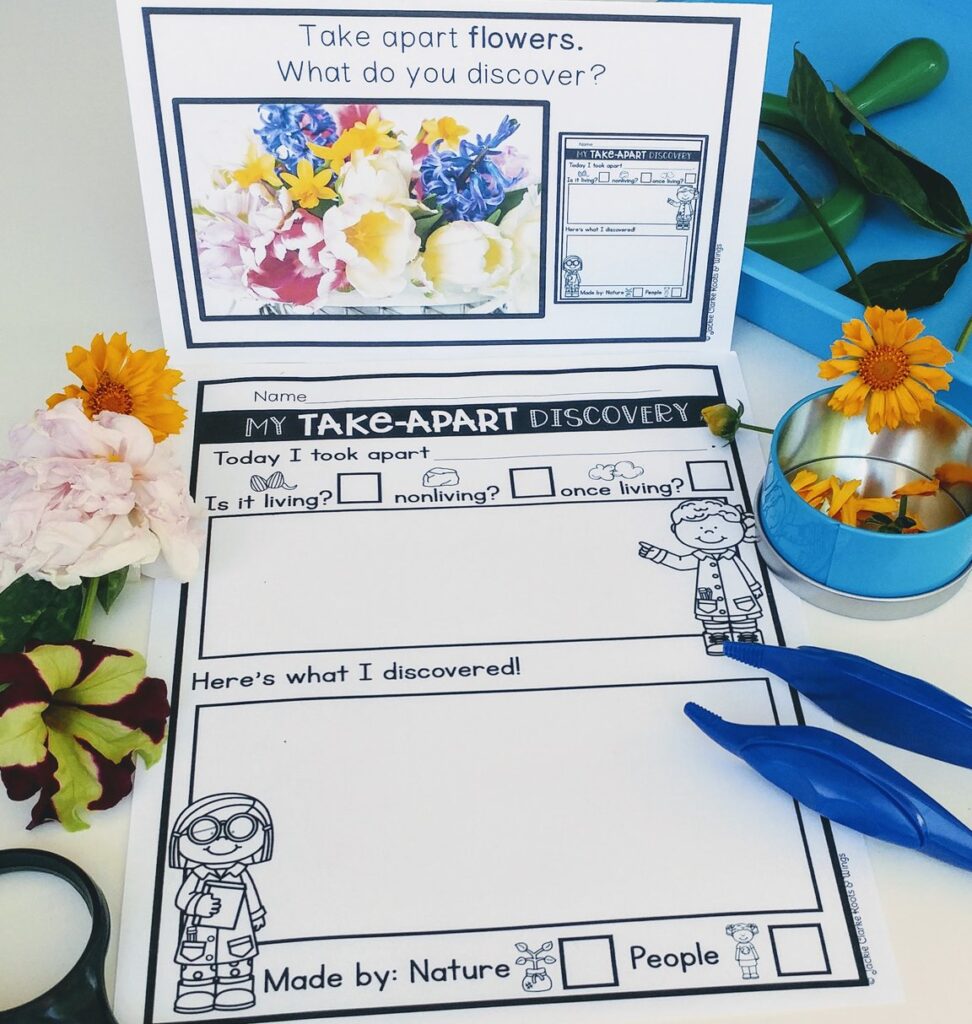
I bring in a pumpkin in the fall, evergreen branches in the winter, and flowers in the spring. Add tools such as scissors, tweezers, scoops, magnifying glasses, and jars for your little scientists to use.
Use the recording sheets to help children draw and write about what they discover as they take things apart. Teach into their discoveries to help children learn more about life cycles and structure and function.
Cool Collections
My kiddos are fascinated by collections and there are SO many things I can teach with them! Such as:
- Where did these objects come from?
- Were these objects made by nature or people?
- Are these objects living, nonliving, or once living?
- What words would you use to describe how these objects feel?
- Can you sequence these objects from shortest to longest?
- Do you see any patterns on these objects?
- Can you make a picture or design with these objects?
- Tell me the life story of one of these objects.
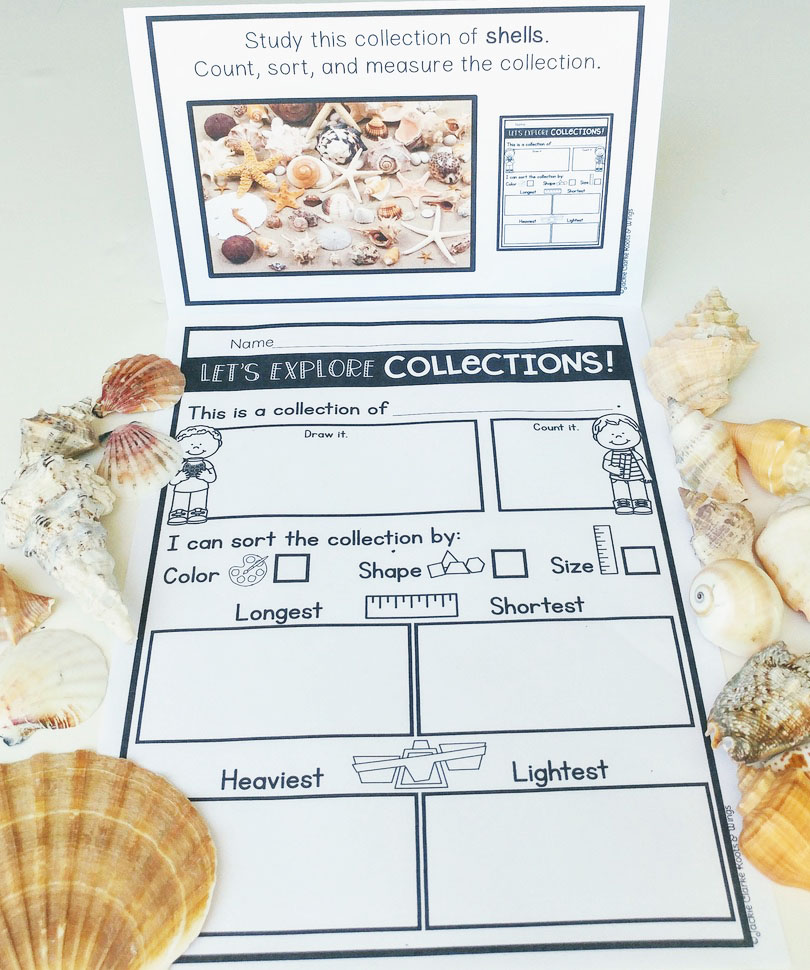
So I set up a Cool Collections Station within my science center and invite children to explore the properties of objects while utilizing the science and math practices of counting, sorting, and measuring. Periodically, I change out the collection to include rocks, leaves, twigs, pine cones and other fun stuff.
Creature Features
Many young children are animal lovers and enjoy learning about new and different species. This station, which supports our animal research units in the spring, invites children to look closely at a variety of creatures and record their features.
In the Creature Feature Station I offer two types of invitations:
- The Animal Challenge asks children to choose a creature, from a tub of plastic animals, and document its features. This is as an ongoing invitation that changes only by the animals that I add there, which are usually grouped by habitat. Children study the animal, fill out the recording sheet, and invite the class to guess the creature during share time.
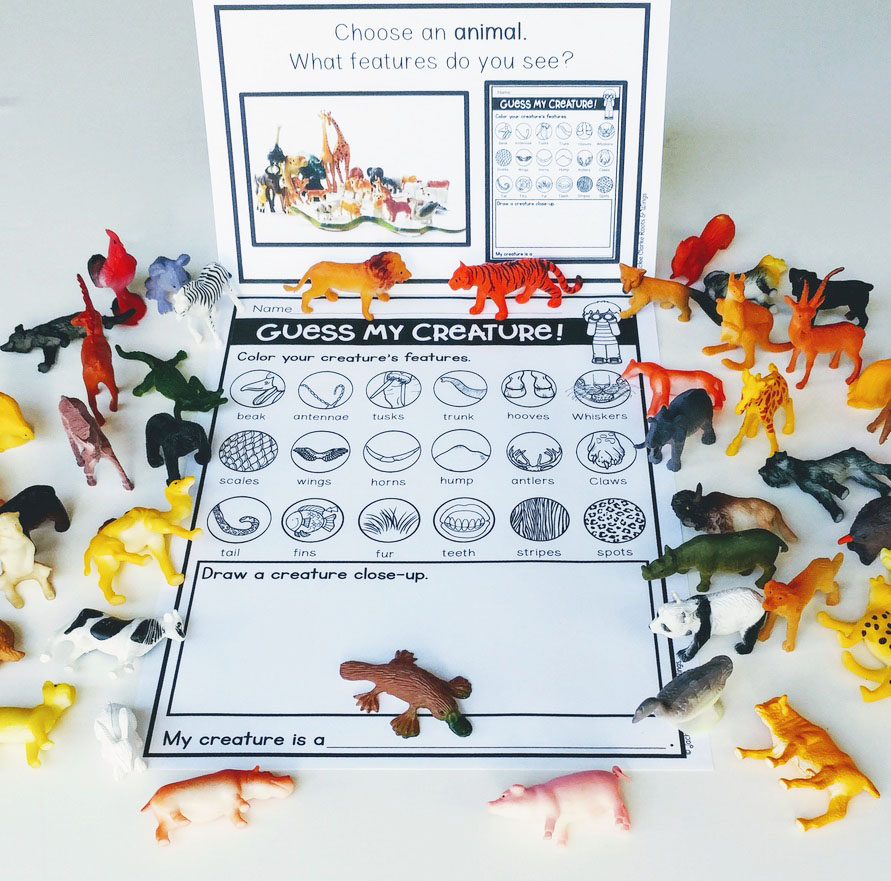
- The Feature Challenge invites children to discover and document animals that share a common feature. Each month, I choose a new feature to highlight and make available animals that share that feature. Children use books and photos to search for additional animals to draw on their recording sheet.
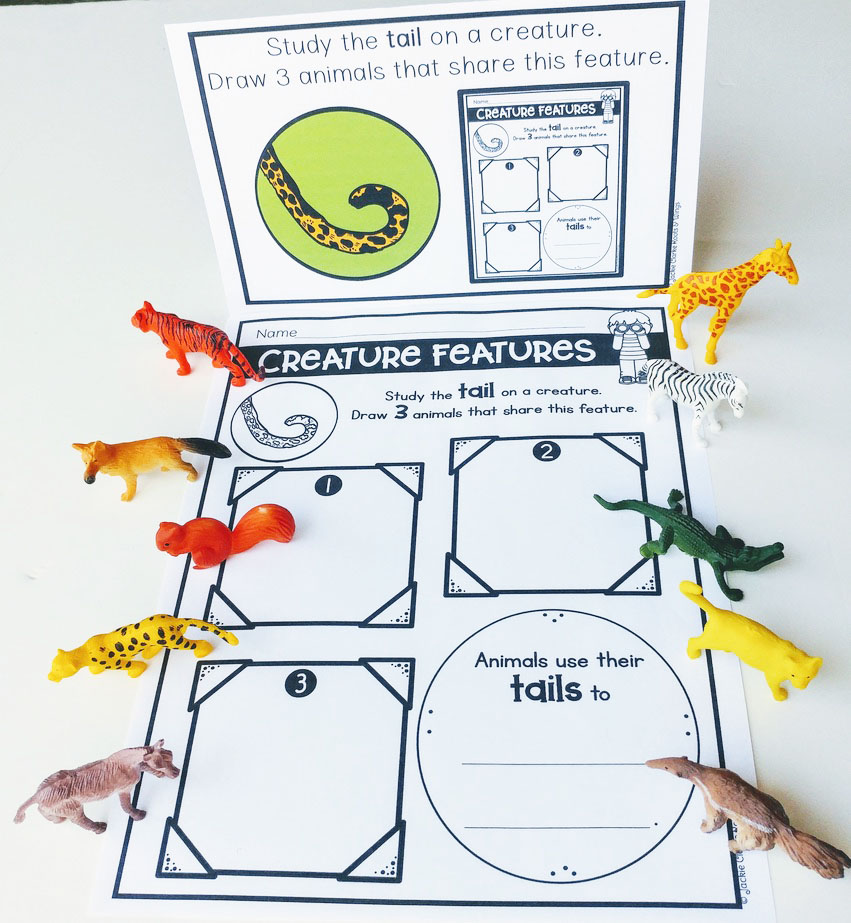
Fab Lab Experiments
Children CAN do their own experiments and this Fab Lab Station is how I get them to that place.
Each Fab Lab Experiment asks a ”testable” question and invites children to make predictions and set up experiments using everyday objects.
The experiments follow a consistent structure and model the scientific process. This supports young children in designing and carrying out their own experiments built around their questions and curiosities.

I use these experiments in two ways:
- Guided Practice: The science center is our home base to set up and monitor the experiments we are doing as a whole class. The kids enjoy checking in to observe ongoing changes and monitor progress.
- Independent Practice: Once we have done many experiments, using this consistent format, children naturally start to think in this way and ask their own “testable” questions. To support this, I provide blank recording sheets for children to design and carry out their own experiments while working in the science center.
Weather Station
This science center activity gives children opportunities to observe, record, and share weather data using a consistent set of vocabulary words and symbols.
I usually set up the Weather Station mid year, when the weather in our area begins to get “interesting,” but it can certainly be used for the duration of your school year.
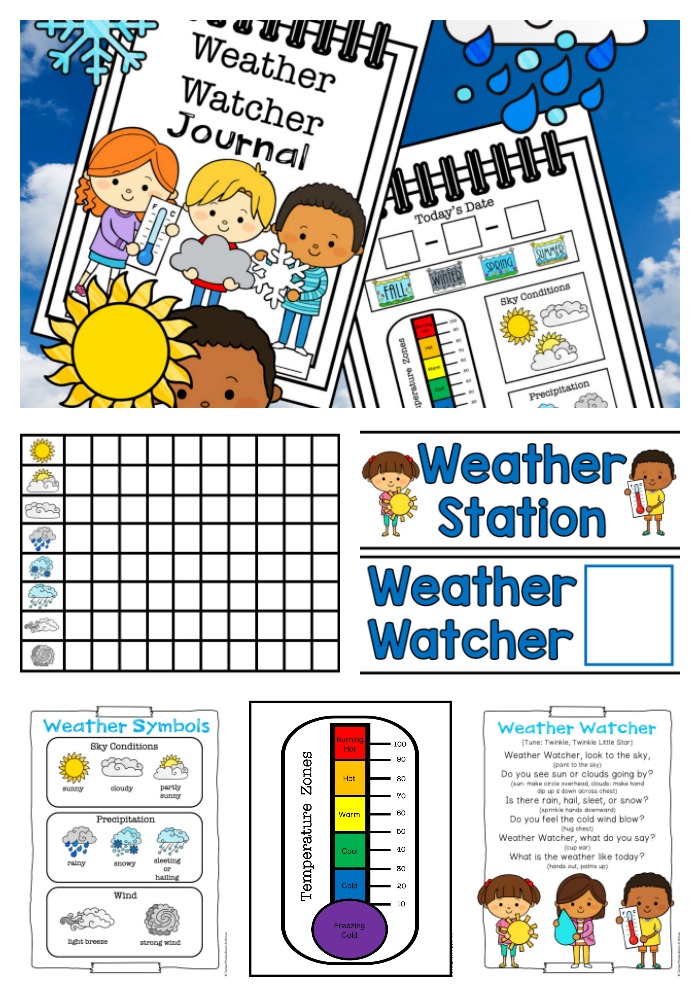
For the first month, we track and record the weather as a whole group as children learn the vocabulary and weather icons. Once they understand how the journal page works, children are chosen as “weather watchers” to visit the science center each morning, observe and record the weather, and share their “forecast” with the class. Great conversations develop from this routine as children begin to notice weather changes and make comparisons between weather and times of year.
Science Activities in Other Centers
Science doesn’t have to be limited to just the science center! In my classroom, it spills over to other centers as well.
In the block center, we build habitats.

In the makerspace, we utilize the engineer design process.
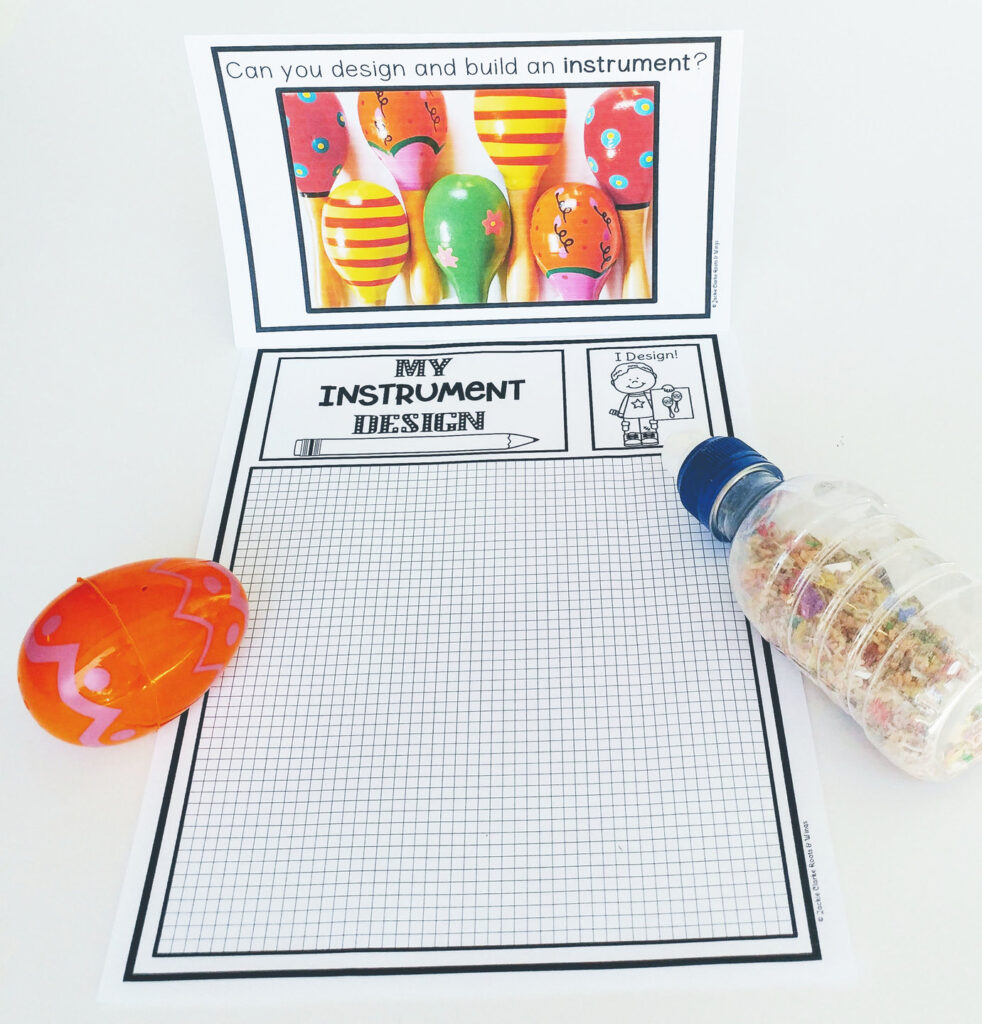
And in the storytelling center, we tell life cycle stories.
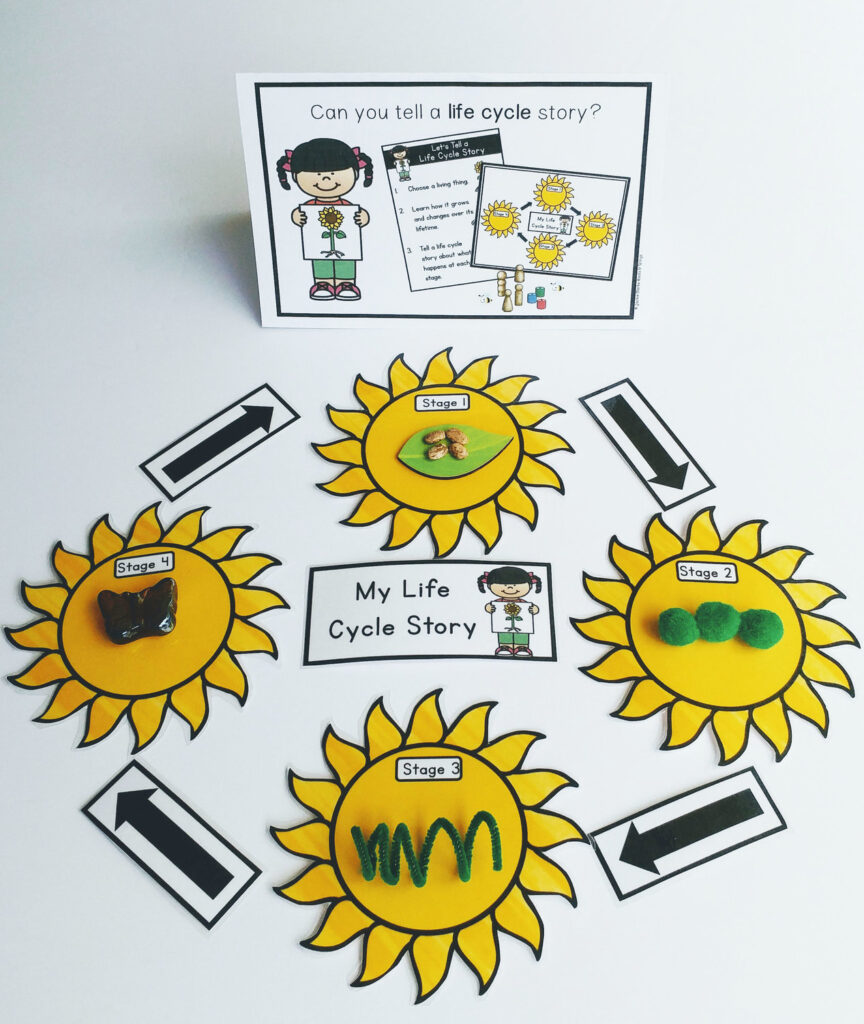
Set Yourself Up For Science Success
Science instruction doesn’t have to be an afterthought. By setting up a science center in your classroom, and including stations that can be used all year long, you will be creating an environment that allows you to teach into the science that your littles are doing each and every day.
And don’t forget, there is a LOT of math and literacy practice that children are doing as well. Look at the above photos and you’ll see lots of examples!
You can get the first 4 science activities shared above in a Science Center Bundle that I have put together along with a complete Science Center Start-Up Guide that walks you through the process of setting up and maintaining your own classroom science center. The Weather Station, Block Center Invitations, Makerspace Invitations, and Storytelling Invitations are also available, but all sold separately.

For more science ideas and activities, check out the Growing with STEAM page inside the Roots & Wings Resource Library.
This post contains affiliate links. Roots & Wings is a participant in the Amazon Services LLC Associates Program, an affiliate advertising program designed to provide a means for sites to earn advertising fees by advertising and linking to Amazon.com.


 3 Types of Makerspace Challenges to Use Across the Kindergarten Year
3 Types of Makerspace Challenges to Use Across the Kindergarten Year 5 Must-Have Materials for Your Kindergarten Block Center
5 Must-Have Materials for Your Kindergarten Block Center Using Animal Webcams for Animal Research in Kindergarten
Using Animal Webcams for Animal Research in Kindergarten Wind Walk Adventures & Activities
Wind Walk Adventures & Activities